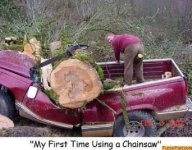IMPACT FROM TREE DEBRIS AND FELLED TREES
Key Engineering Controls and Work Practices
Limit access/set up controlled access zones
During trimming, keep non-essential response and recovery workers at least 20 feet beyond expected drop zones during trimming
During felling, designate work area so that trees cannot fall into an adjacent occupied work area. Adjacent occupied work areas should be at least two tree lengths from the tree being felled (allow more if it is reasonably foreseeable that the tree might roll or slide)
Always plan a clear path of retreat before cutting
Determine the felling direction and how to deal with forward, back, and/or side lean
Determine the proper hinge size to safely guide the tree in its fall
If tree is broken and under pressure, make sure you know which way the pressure is going. If not sure, make small cuts to release some of the pressure before cutting up the section
Be careful of young trees that other trees have fallen against; they act like spring poles and can propel back
If you have to cut a dead tree, be careful: the top could break off
If possible, avoid felling trees into other trees or objects; branches and objects may get thrown back toward the tree cutter

